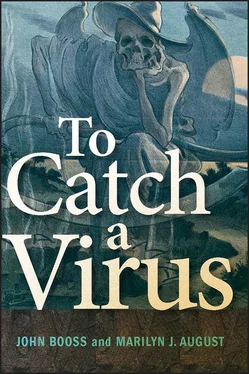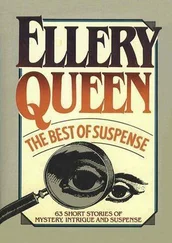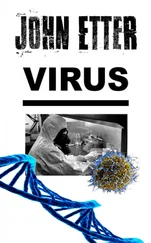Communicability was demonstrated by Ivar Wickman 11 years later in Sweden, showing the role of nonparalytic cases in sustaining the epidemic ( 67). John Paul emphasized Wickman’s contribution: “Considering the importance of the contributions of Ivar Wickman, I do not believe that his work is fully appreciated today” ( 47). Later, Wickman failed to be appointed the Chair of Pediatrics at Stockholm, a position formerly held by his mentor in polio studies, Karl Oscar Medin. Perhaps in despair, though the reason was never ascertained, Wickman took his own life at the age of 42. John Paul emphasizes Wickman’s contributions as identifying the contagious nature of the disease, describing the importance of nonparalytic forms, estimating the incubation period as 3 to 4 days, and classifying different forms of the disease ( 67). Polio transmission to monkeys was soon to be shown by others. While crucial in demonstrating the viral nature of the disease, studies with monkeys may have deflected attention from key pathogenic aspects of the human disease.
The first decade of the 20th century proved to be decisive in the demonstration of polio as caused by a contagious, filterable virus. Unfortunately, those proofs were dependent on the emergence of epidemics of polio in Europe and North America. Wickman’s extensive studies of the epidemic in Sweden in 1905 were published as journal reports and as a monograph which was translated into English in 1913 ( 67). While the infectious nature of the disease had been suspected, no bacterial cause had been successfully demonstrated. Small laboratory animals also had not yielded an agent. However, in a meeting in December 1908 in Vienna, Austria, Karl Landsteiner, acknowledging the assistance of collaborator Erwin Popper, reported transmission of polio to monkeys, demonstrating for the first time a virus as the etiological agent of polio ( Fig. 4). Two monkeys inoculated by the intraperitoneal route with spinal cord from a fatal human case demonstrated the symptoms and microscopic lesions of polio ( 38). A fuller presentation of Landsteiner and Popper’s findings was published the following year ( 33). Clinical findings of paralysis were observed in one of the monkeys, and both showed the characteristic histopathological findings of polio in the spinal cord exactly like those observed in human cases. In contrast, rabbits, guinea pigs, and mice, also inoculated by the intraperitoneal route, were negative. Thus, the importance of the monkey for isolation of poliovirus was established.

Figure 4Karl Landsteiner. Landsteiner was awarded the Nobel Prize in 1930 for the discovery of human blood groups. Another significant contribution was the demonstration that polio could be transmitted to monkeys by using spinal cord tissue from children who had died from the illness. (Courtesy of the Albert and Mary Lasker Foundation.)
doi:10.1128/9781555818586.ch2.f4
Simon Flexner and Paul A. Lewis at the Rockefeller Institute in New York, NY, quickly picked up the observations of Landsteiner and Popper and demonstrated serial passage of polio in monkeys using intracerebral inoculation ( 16) of spinal cord material. The importance of serial passage was to eliminate the possibility of a nonreplicating toxic factor, an experimental principle that had been established with the first demonstration of a viral disease in animals, foot-and-mouth disease by F. Loeffler and P. Frosch ( 37). Success in passage of polio to monkeys benefitted from serendipity. Landsteiner and Popper noted that the monkeys they had used had been left over from previous studies of syphilis ( 33). As pointed out by John Paul, Landsteiner and Popper used Old World monkeys, not the “relatively unsusceptible” New World monkeys ( 47). It remained to be shown that the experimental disease could be transmitted by filtered material. Landsteiner, teamed with Constantin Levaditi of the Metchnikoff Laboratory at the Pasteur Institute, reported on 28 November 1909 the successful transmission of polio to a monkey after intracerebral inoculation of an emulsion which had been passed through a Berkefeld V filter ( 32). Likewise, on 18 December 1909, Flexner and Lewis at the Rockefeller Institute reported transmission of polio to a monkey by intracerebral inoculation of spinal cord material passed through a Berkefeld filter ( 17). Thus, within 1 year, December 1908 to November and December 1909, clinical and pathological experimental replication of poliovirus in monkeys had been achieved, with serial passage and confirmed demonstration of the filterability of the infectious agent.
Arthropod-Borne Diseases, Yellow Fever, and Epidemic Encephalitides: Monkeys and Mice
The experiments of Walter Reed et al. and the Yellow Fever Commission in Cuba following the Spanish-American War were conducted with human volunteers. Reed and Carroll’s studies on the filterable agent ( 50), while confirmed by others, could not be carried further because of the ethical objections to use of human volunteers in potentially lethal experiments. Hence, while extraordinary progress was made in control of the yellow fever due to the work of William Crawford Gorgas in controlling the mosquito vector ( 24), little progress was made in either laboratory diagnosis or seroepidemiological studies. The field remained hampered for demonstration of potential etiological agents until an animal susceptible to infection by yellow fever virus was identified. Thus, when Hideyo Noguchi inoculated guinea pigs with material from yellow fever patients in Guayaquil, Ecuador, and Leptospira icteroides was isolated, it was thought to be the etiological agent of yellow fever ( 45). Noguchi’s investigations were done under the auspices of a commission established by the Rockefeller Foundation.
Because of their remarkable contributions, the origins of the Rockefeller Foundation and its International Health Commission should be mentioned. The International Health Commission was formed in 1913, and its first task was control of yellow fever. It had been feared that the opening of the Panama Canal would result in the spread of yellow fever to the Orient because of “radical changes in trade relations” ( 65). Hence, the International Health Commission set as its goal to “give aid in the eradication of this disease in those areas where the infection is epidemic. . . .” A first target for elimination of the disease was Guayaquil. An antimosquito campaign started at the end of 1918 resulted in no further cases of yellow fever after June 1919. That accomplishment was accompanied by Noguchi’s report of a leptospira as the cause of yellow fever. As A. J. Warren commented, “Dr. Noguchi’s error is easily understandable.” Clinically, yellow fever and the illness caused by the spirochete closely approximate each other and may coexist in a population ( 65). It remained for another Rockefeller commission to finally disentangle the etiology of yellow fever.
In 1925, the West Africa Yellow Fever Commission was established ( 65). It was in Nigeria that Adrian Stokes, Johannes H. Bauer, and N. Paul Hudson used Macacus rhesus monkeys to confirm the filterable viral etiology of yellow fever ( 59). In contrast to the findings of Noguchi, no spirochetes were demonstrated. However, they did demonstrate the transmission of yellow fever from human to monkey and from monkey to monkey. While another species, Macacus sinicus , was shown to be only moderately susceptible, Macacus rhesus replicated the clinical disease and pathology as found in humans. Thus, the agent fulfilled the requirement to pass through Berkefeld V and N grade filters. In efforts to defend his theory of the leptospira etiology, Noguchi traveled to West Africa. Tragically, he did not live to resolve this conundrum; he died in 1928 of yellow fever at age 51 before learning the answer.
Читать дальше













